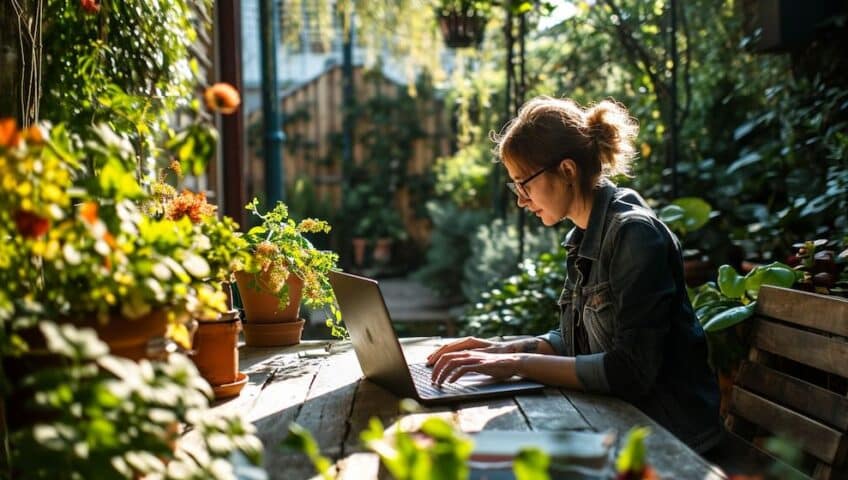Listen to the Article
Table of Contents
Picture your landscape transforming into a vibrant oasis of drought-tolerant plants, humming with wildlife, and blooming with color. This is the incredible potential of a turf replacement program – and the best part? You can even get paid to make the change! Intrigued? Let’s delve into the world of turf replacement programs, where you can transform your landscape, conserve water, and pocket a huge rebate.
Key Takeaways
- Transform your landscape and save with turf replacement programs, which can puts thousands of dollars back in your bank account
- Enjoy the financial and environmental benefits from water conservation by discovering popular local turf replacement programs
- Maximize your savings potential with tips for researching available programs and calculating project costs
Understanding Turf Replacement Programs
Imagine replacing your existing grass landscaping with a beautiful array of heat-tolerant plants, creating a natural wildlife habitat right in your backyard. This is the essence of turf replacement programs, initiatives designed to conserve water and promote biodiversity. But beyond the aesthetic charm and ecological benefits, there’s a financial incentive too. You will save money on your water bills and could even pocket a substantial rebate by swapping out your lawn with water-wise native plants and replacing overhead spray sprinklers with efficient irrigation systems.
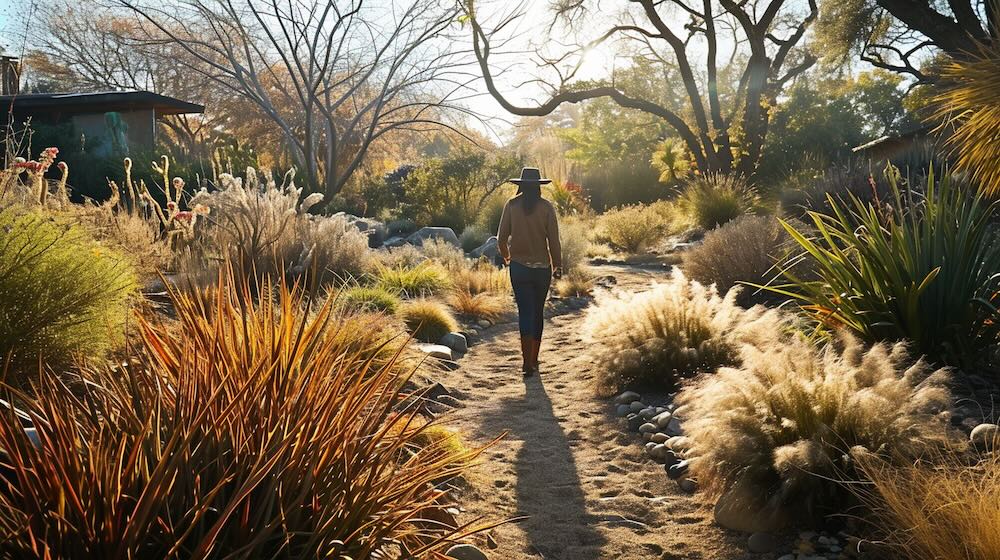
Across the United States, water districts and agencies are offering enticing turf replacement programs. Turf replacement is when a residential or commercial property owner removes their existing grass landscaping, and replaces it with heat tolerant plants in order to save water and create a more natural wildlife habitat. Applying for a local turf removal and replacement rebate is a cost-effective and sustainable approach to landscaping your yard. For example, if you live in one of these California municipalities, once you finish your converted yard project and your local water agency approves it, you get a rebate (i.e., free money)!
Why Turf Replacement Programs Exist
Turf replacement programs exist primarily for environmental and resource conservation reasons and can lead to long-term cost savings for homeowners and commercial businesses by reducing water bills and maintenance costs. These programs and incentives are part of a broader movement towards sustainable landscaping, acknowledging the need to adapt to changing environmental conditions and the importance of preserving natural resources.

Water Conservation
In many regions, especially those facing drought or water scarcity, grass lawns require a significant amount of water to maintain. Replacing turf with drought-tolerant landscaping significantly reduces water consumption. In return for swapping out grass for water-wise plants, local agencies and governments often provide financial incentives in the form of rebates, tax breaks, or subsidies. For instance, a water utility company might offer rebates between $1 to $5 per square foot of grass replaced with drought-tolerant landscaping.
Environmental Benefits
Native and drought-tolerant plants typically require less maintenance, fewer pesticides, and fertilizers, reducing chemical runoff and pollution. These landscapes can improve biodiversity by providing habitats for local wildlife and supporting pollinators.

Reducing Urban Heat Island Effect
Traditional lawns and synthetic turf can contribute to the urban heat island effect, where urban areas become significantly warmer than their rural surroundings. Drought-tolerant and native plant landscaping, especially when it includes shading elements, can help mitigate this effect.
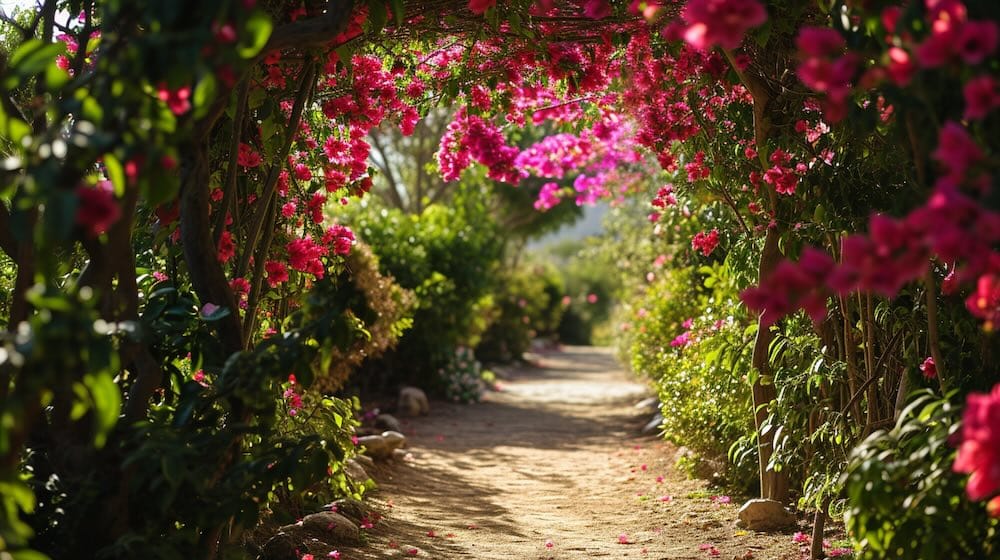
Compliance with Regulations
In some areas, landscaping regulations require a certain percentage of drought-tolerant plants in new commercial and residential developments. Turf replacement programs help property owners comply with these regulations.
Tips for Maximizing Your Turf Replacement Rebate
How can you optimize your turf replacement rebate? Here are a few tips:
- Research available programs and compare rebate amounts
- Calculate project costs to maximize the rebate amount
- Choose water-efficient landscaping options that qualify for higher rebates
- Follow program guidelines to ensure eligibility
- Consult with professionals for expert advice
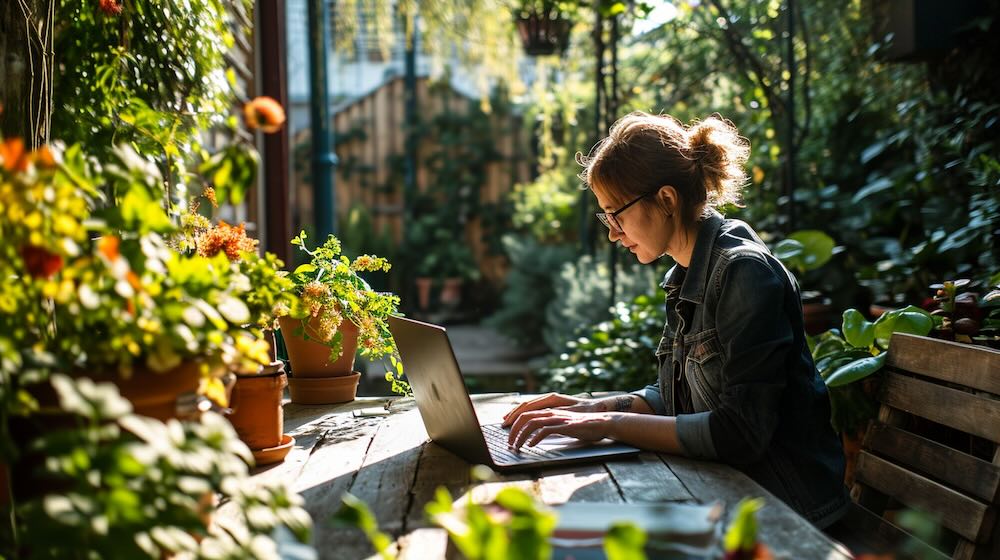
Of course, to maximize your rebate, you need to ensure that you’re eligible in the first place. So, make sure you meet all the requirements, from being a residential or commercial property owner with an existing grass landscape to getting prior approval through the rebate application process.
Maximizing Rebate Amounts
To maximize your rebate amount, it’s necessary to plan carefully and fully utilize all available incentives. You might be surprised to learn that the size of your project can significantly impact your rebate. The larger the project, the more rewards you can reap, as you may be eligible to receive incentives per square foot of lawn removed. Moreover, additional incentives and discounts that can be combined with a turf replacement program rebate include:
- Water agency rebates
- Local government programs
- Utility company programs
- Manufacturer or retailer discounts
There’s a wealth of opportunities to maximize your savings.

Staying Informed about Local Programs
Keeping informed about local turf replacement programs and rebates is key to fully benefitting from them. Regularly check for updates and changes in eligibility requirements or rebate amounts. This can be as simple as visiting the official website of your local water agency or conservation department, signing up for email newsletters, or following their social media accounts.
Remember, the specific eligibility requirements and benefits of turf replacement programs can vary significantly from state to state and even from one municipality to another. So, make sure to stay in the loop and keep abreast of any changes or updates in your local program.
7 Steps to Getting your Landscaping Rebate
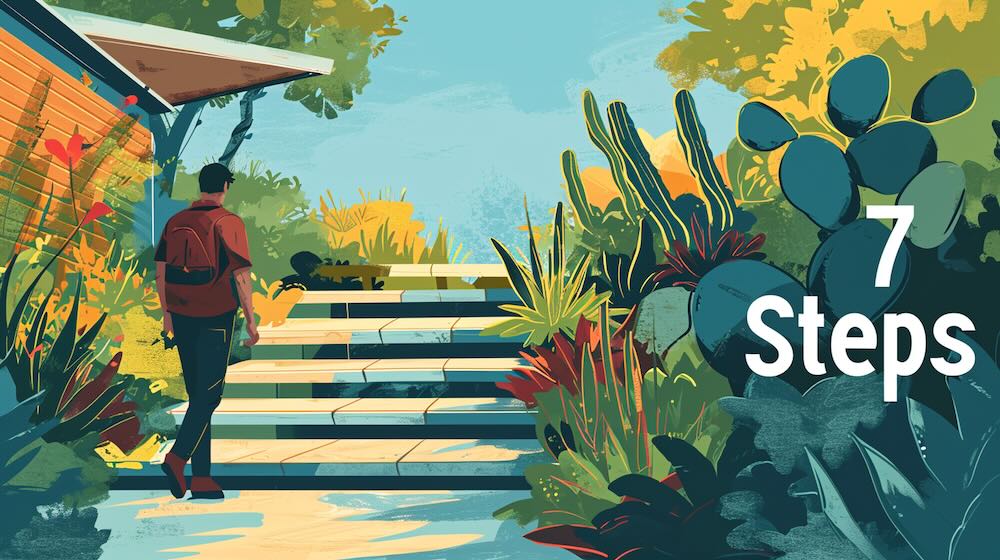
In most cases, you’ll need to follow these 7 steps to be eligible for a sustainable landscapes rebate. It varies from state-to-state, and city-to-city, but generally to complete a turf replacement project, you must:
- Be a residential or commercial property owner with an existing grass landscape: The intent of a turf replacement program is to have single-family homeowners, multi-family property owners, and businesses remove their existing grass and replace it with organic, drought tolerant landscaping.
- Measure the area to be transformed (in square feet). Before making any changes to your turf, you must measure your current residential or commercial landscape (in square feet). This calculates your estimated rebate amount (plus any additional rebate incentive).
- Get prior approval through the rebate application process. Submit a turf replacement plan that shows a sketch or digital drawing of the area, list of plants, location of stormwater retention feature, photos of your current turf, and a recent water bill.
- Remove turf from your landscape. This is the step where you start getting your hands dirty! You need to remove the turf (i.e. the grass) to get ready for the new landscape. There are a number of ways to do this, from using a shovel and a sod cutter, to killing the grass by covering it with cardboard.
- Transform your landscape area with plants, a stormwater retention feature, permeable hardscape, and more. Now that all the turf grass is gone, you can start planting your drought tolerant vegetation (native plants recommended). Some local water agencies require a certain number of plants per square foot (e.g. in Los Angeles, you must have 3 drought tolerant plants per 100 square feet). You may also need to add a selected stormwater retention feature like a rain barrel, rain garden, or rock garden, as well as hardscaping that allows water to pass through it (i.e., permeable). You cannot use artificial or synthetic turf.
- Remove overhead spray sprinklers and replace with a water efficient irrigation system. Your new plants need water, but much less water than before. Take out those old sprinkler heads and replace them with an efficient, low water drip irrigation system. At this point, you’re looking at an area transformed by water wise choices!
- Get post project approval for your rebate. Your last task is to submit a report on the sustainable landscape approach selected, including a description of project area, turf removed (e.g. turf grass, artificial turf), new plants, ground cover, organic mulch, permeable hardscapes, weather based irrigation controllers that ensure water savings, etc.
Summary
In conclusion, turf replacement programs provide a fantastic opportunity to transform your landscape, conserve water, and receive a rebate for your efforts. By choosing drought-tolerant plants, implementing efficient irrigation systems, incorporating rainwater harvesting features, and staying up-to-date on local programs, you can maximize your rebate and create a beautiful, sustainable landscape. So, why not make the switch and join the turf replacement revolution today?
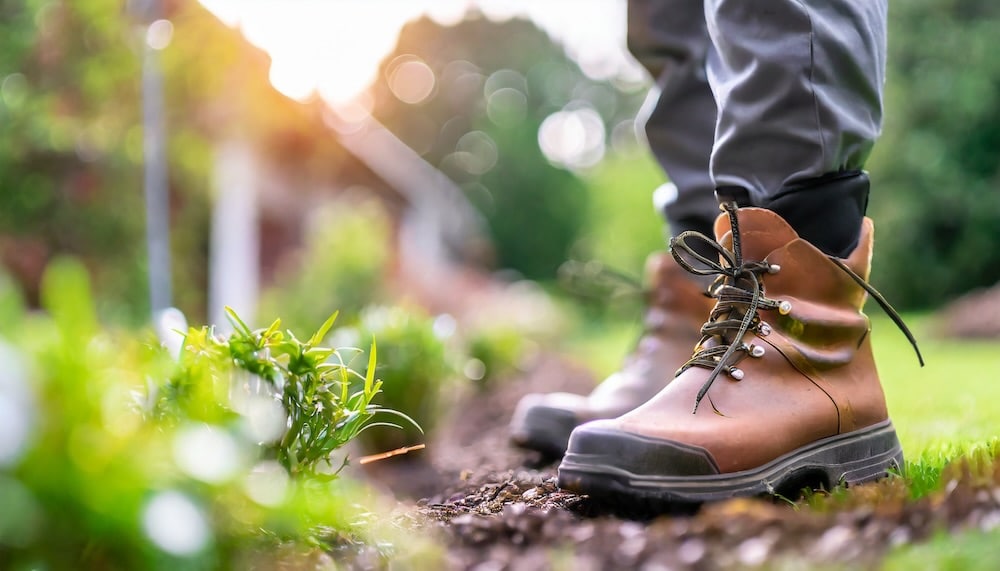
FAQ
Is replacing my turf landscape really worth all that work?
It’s natural to feel a bit overwhelmed when there are several big steps involved. Turf replacement can be a big deal. Agencies offering the turf rebate don’t always do a great job of describing the project process, including how to become eligible for the program, how to fill out the rebate application, what a turf removal plan looks like, what plants to buy, and how to present your transformed area.
But it’s worth it if you like a lot of free money! At $1 to $5 per square foot (perhaps even more), you’re looking at a rebate that is worth hundreds, if not thousands, of dollars. If you budget your turf project wisely, this means that you can potentially break even, or better yet make money on your landscape project. Plus, the water savings you’ll experience after your project is completed means even more money in your wallet.
What are the steps to getting a landscaping rebate?
Property owners can get a landscaping rebate by measuring their grass landscape, applying for approval, transforming the area with plants and features, and replacing spray sprinklers with a water-efficient system, followed by post-project approval.
What are the benefits of a turf replacement program?
Replacing turf with native plants through a turf replacement program provides many benefits, including a rebate, water savings, a natural wildlife habitat, and potential savings on your water bill.
